The world around us is filled with captivating structures, each one a testament to human perception and creativity. Architectural photography allows us to capture the essence of these buildings, transforming them into stunning works of art. Whether you're a seasoned photographer or just starting out, mastering this unique genre can be incredibly rewarding for you.
This entire blog dives into architectural photography- it's tips & techniques, providing you with valuable tips and techniques to elevate your shots. We'll begin with an introduction to architectural photography, exploring its significance and the various approaches you can take. Next, we'll dive deep into architectural photography tips, including essential gear recommendations, technical considerations, and the exciting possibilities of AI Design Tools. These tools can help you visualize concepts, experiment with different styles, and generate unique compositions to breathe life into your architectural photography. So, are you still wondering how to shoot architectural photography? Search for a place near you, take out your camera and start shooting. But before you do that, read this blog first, it'll help you immensely. Let's get started!
Why Architectural Photography Matters
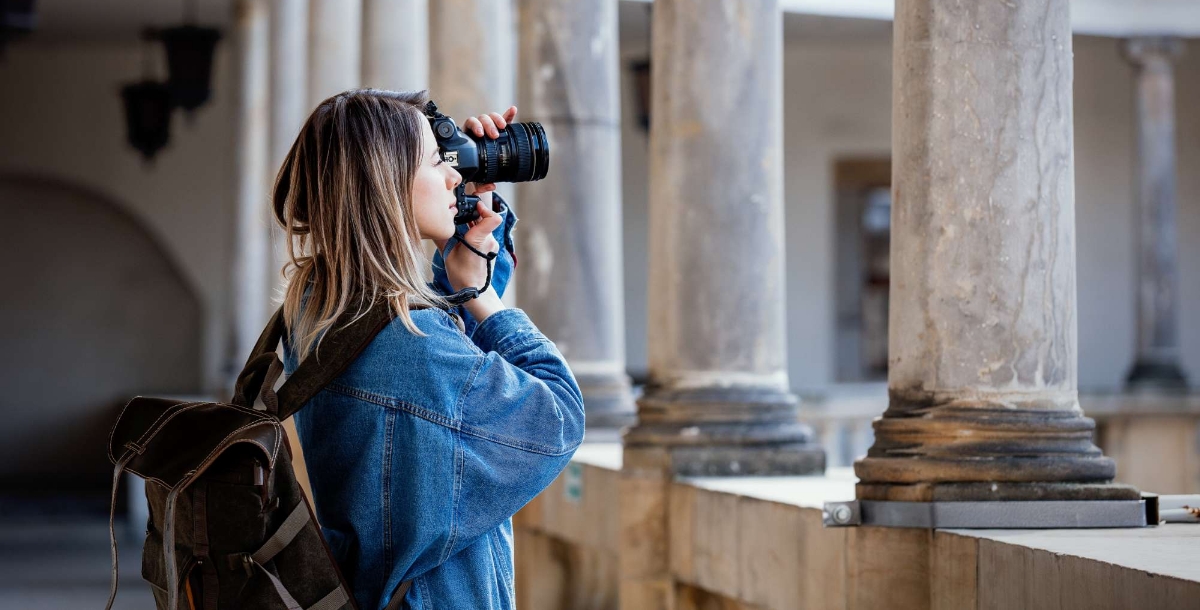
Before we delve into the technical aspects, let's explore the importance of architectural photography. It serves several purposes:
Preserves history: Architectural photographs act as a visual record of our built environment, documenting the architectural styles and innovations of different eras. These images can be invaluable for historical research and preservation efforts.
Showcases creativity: Architectural photography allows us to appreciate the artistry and design principles behind buildings. A skilled photographer can capture the unique details and perspectives that make a structure stand out.
Inspires and educates: Architectural photographs can spark our imagination and inspire us to learn more about different architectural styles and movements. They serve as an architectural photography guide for enthusiasts looking to improve their skills and explore new techniques.
Bonus Tips: You can also use AI Photo Editor for an amazing editing tool.
Mastering the Art: Architectural Photography Tips
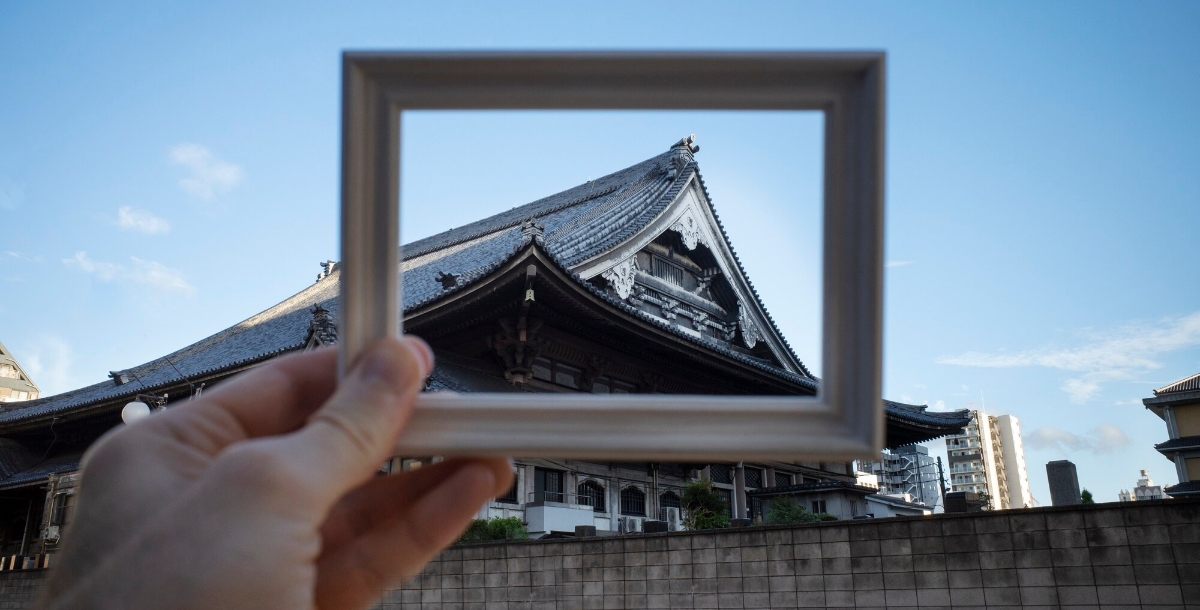
Are you eager to capture stunning architectural photography examples that leave viewers in awe? Whether you're a budding enthusiast or a seasoned pro, mastering the art of architectural photography requires knowledge, creativity, and attention to detail. From conceptualizing architectural photography ideas to perfecting your technique, this comprehensive guide is packed with invaluable tips to help you level up your building photography game. Let's dive in!
Understand the Space:
Before you even pick up your camera, take time to absorb the essence of the architectural space. Pay attention to lines, shapes, and lighting conditions. This understanding will inform your composition and shooting approach.
Play with Perspective:
Experiment with different angles and perspectives to find the most captivating composition. Don't hesitate to get low or climb high for unique vantage points.
Utilize Natural Light:
Natural light can enhance the beauty of architectural structures. Time your shoots during the golden hours of sunrise and sunset for soft, flattering light.
Balance Light and Shadow:
Learn to manage contrasting light and shadow to create dynamic and visually appealing images. Bracketing and HDR techniques can be valuable tools in tricky lighting situations.
Embrace Symmetry:
Symmetry can add a sense of harmony and balance to your architectural shots. Look for symmetrical elements within the building and frame them meticulously.
Experiment with Patterns:
Architectural details often feature intriguing patterns and textures. Get up close and personal to capture these intricate details that add depth to your photographs.
Focus on Lines and Shapes:
Use leading lines and geometric shapes to guide the viewer's eye through the image. Straight lines can create a sense of stability, while curves add fluidity and movement.
Consider Scale:
Incorporate elements that provide a sense of scale, whether it's a person standing next to a towering skyscraper or a tree framing a quaint cottage.
Highlight Unique Features:
Every building has distinctive architectural features worth showcasing. Whether it's ornate facades or minimalist design elements, zoom in on these details to tell a compelling visual story.
Experiment with Reflections:
Explore the reflective surfaces of buildings, such as glass facades or water bodies, to capture intriguing reflections that add depth and dimension to your images.
Master Depth of Field:
Understand how aperture settings affect depth of field and experiment with different focal points to create a sense of depth in your photographs.
Shoot During Different Weather Conditions:
Don't shy away from shooting in diverse weather conditions. Rain, fog, or snow can add mood and atmosphere to your architectural photographs.
Utilize Architectural Photography Filters:
Experiment with polarizing filters to reduce glare and enhance colors, or Neutral density filters to control exposure in bright sunlight.
Tell a Story:
Use your architectural photography to convey a narrative or evoke emotions. Incorporate elements of human presence or interaction to add context and depth to your images.
Explore Urban Landscapes:
Urban environments offer a wealth of architectural photography opportunities. Capture the hustle and bustle of city life against the backdrop of towering skyscrapers and historic landmarks.
Capture the Passage of Time:
Experiment with long exposure photography to capture the passage of time, whether it's the movement of clouds overhead or the flow of traffic around a building.
Use HDR Imaging:
High Dynamic Range (HDR) imaging allows you to capture a wider range of tones and details in your architectural photographs, especially in high-contrast scenes.
Experiment with Black and White:
Black and white photography can accentuate the lines, shapes, and textures of architectural subjects, stripping away distractions and focusing on form.
Shoot at Night:
Nighttime can transform architectural landscapes into captivating scenes illuminated by artificial light. Experiment with long exposures and light painting techniques for stunning nighttime shots.
Stay Patient and Persistent:
Architectural photography often requires patience and persistence to capture the perfect shot. Don't be afraid to revisit locations multiple times to capture different lighting conditions or compositions.
Invest in Quality Gear:
While a fancy camera isn't a prerequisite for great photography, investing in quality lenses and equipment can significantly elevate the quality of your architectural shots.
Keep Your Gear Clean and Well-Maintained:
Dust and debris on your camera sensor or lens can ruin an otherwise perfect shot. Make sure to regularly clean and maintain your gear to ensure optimal performance.
Study Architectural Photography Examples:
Draw inspiration from the work of renowned architectural photographers. Analyze their compositions, lighting techniques, and use of space to inform your own practice.
Seek Constructive Criticism:
Don't be afraid to seek feedback from peers or mentors to improve your skills. Constructive criticism can help you identify areas for growth and refinement in your work.
Document Construction Progress:
If you have access to construction sites, document the progress of buildings from inception to completion. These time-lapse sequences can be fascinating and informative.
Keep Composition Simple and Clean:
Avoid cluttered compositions that distract from the architectural subject. Aim for simplicity and clarity in your framing to ensure the focus remains on the building itself.
Experiment with Drone Photography:
Drones offer unique perspectives and angles that are otherwise impossible to achieve. Familiarize yourself with drone regulations and safety guidelines before taking to the skies.
Learn Photography Terms and Techniques:
Expand your photography vocabulary and technical know-how by familiarizing yourself with photography terms and techniques. A comprehensive photography glossary can be a valuable resource.
Enhance Your Photos with AI Tools:
Take advantage of AI-powered photo enhancers and editors to streamline your workflow and achieve professional-looking results with minimal effort.
Share Your Work:
Don't let your architectural photography languish on your hard drive. Share your work on social media platforms, photography forums, or even in exhibitions to gain exposure and feedback.
Never Stop Learning:
The world of photography is vast and ever-evolving. Stay curious, keep experimenting, and never stop learning new techniques and approaches to elevate your architectural photography game.
Quick suggestion: You can try AI Photo Enhancer for enhancing your photos further.
Additionally, you can explore Photography Flyer Maker to upload your best shots, then customize layouts, text, and fonts to create stunning flyers that highlight your unique perspective and capture potential clients' attention.
Also Read: Learn about mobile photography and How to Take Awesome Photographs with Your Smartphone
Also, you can read: how to learn photography.
Additionally, Photography Flyer Templates provide customizable designs to showcase your portfolio and services effectively.
Conclusion
By incorporating these architectural photography tips into your practice, you'll be well-equipped to capture stunning images that showcase the beauty and grandeur of the built environment. So grab your camera, explore new horizons, and let your creativity soar!
Related Articles
- Beta vs. Alpha Testing: Key Differences Explained
- Top 13 AI Infographic Maker Tools in 2024
- 16 Amazing Tips to come up with Brand New Mobile App Ideas
- 8 Best AI Image Generator Tools in 2023
- Top Graphic Design Tools in Machine Learning
- How to Make a Coloring Book for Kids?
- 15 Ways to Attract More Clients to Your Wedding Business
- How to drive more traffic to your website?
- 10 Best WordPress Form Plugins in 2024
- What is NFT Art Finance and How to Buy NFT Art Finance?
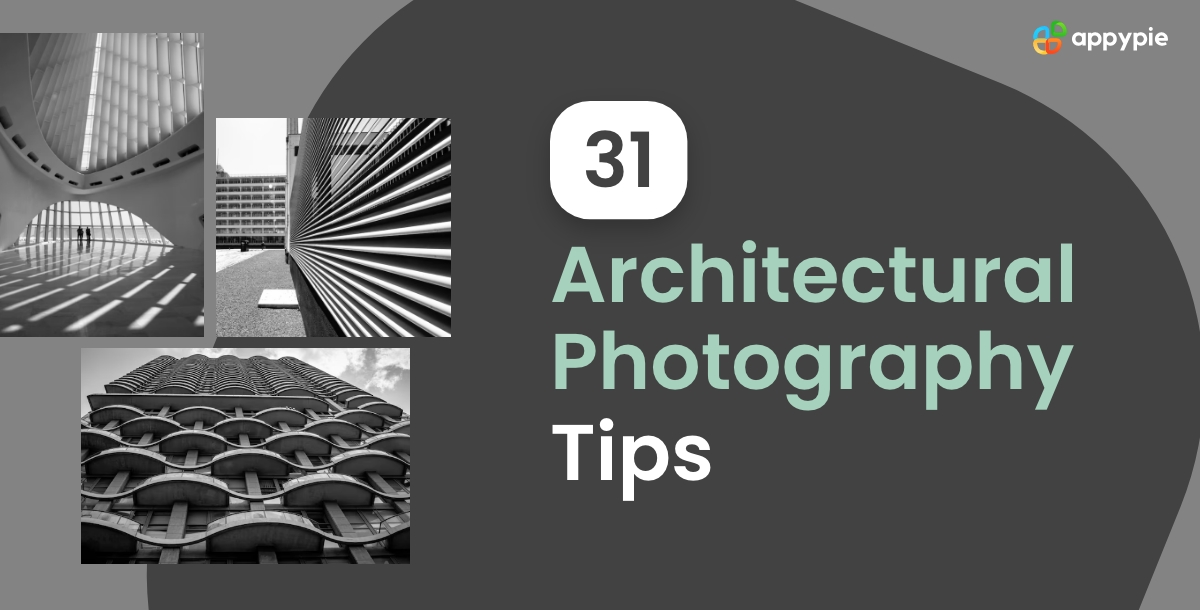
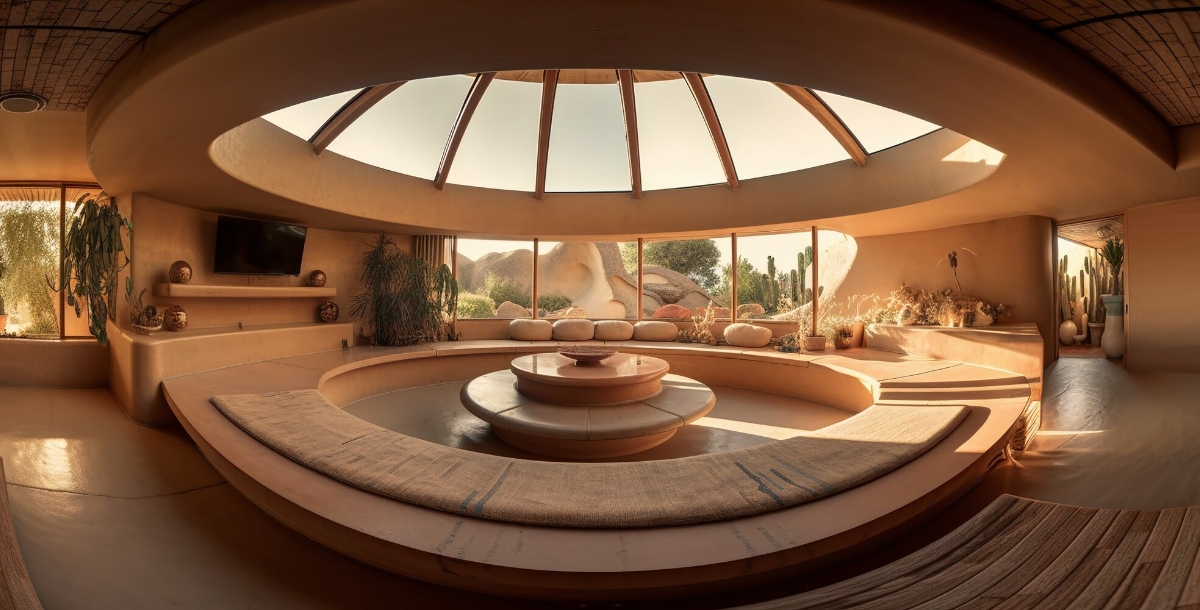 Before you even pick up your camera, take time to absorb the essence of the architectural space. Pay attention to lines, shapes, and lighting conditions. This understanding will inform your composition and shooting approach.
Before you even pick up your camera, take time to absorb the essence of the architectural space. Pay attention to lines, shapes, and lighting conditions. This understanding will inform your composition and shooting approach.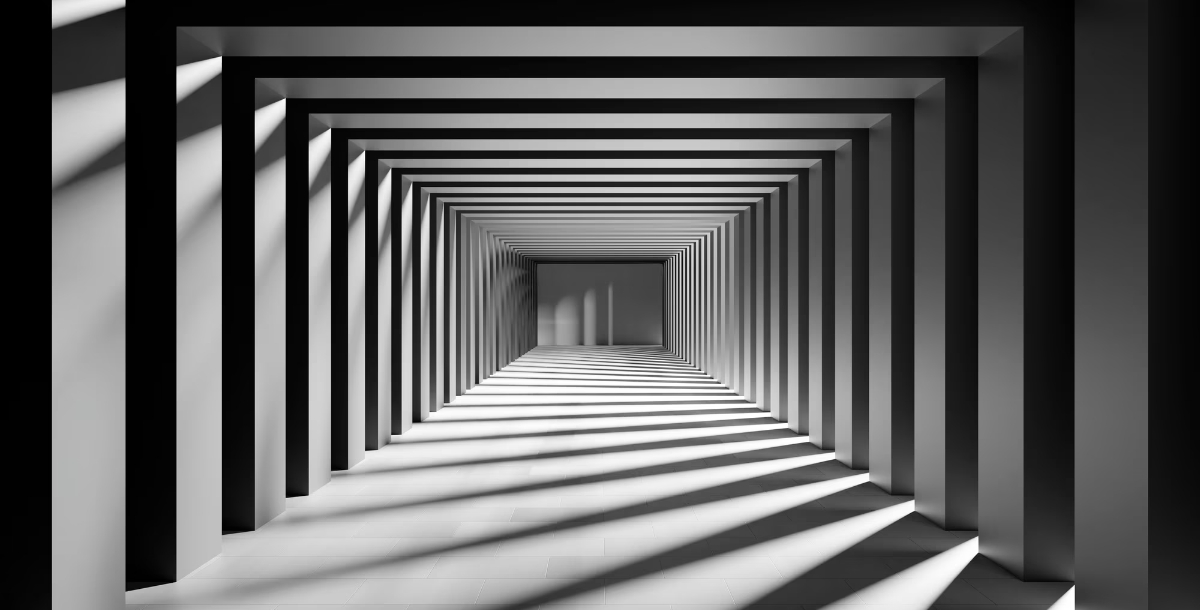 Experiment with different angles and perspectives to find the most captivating composition. Don't hesitate to get low or climb high for unique vantage points.
Experiment with different angles and perspectives to find the most captivating composition. Don't hesitate to get low or climb high for unique vantage points.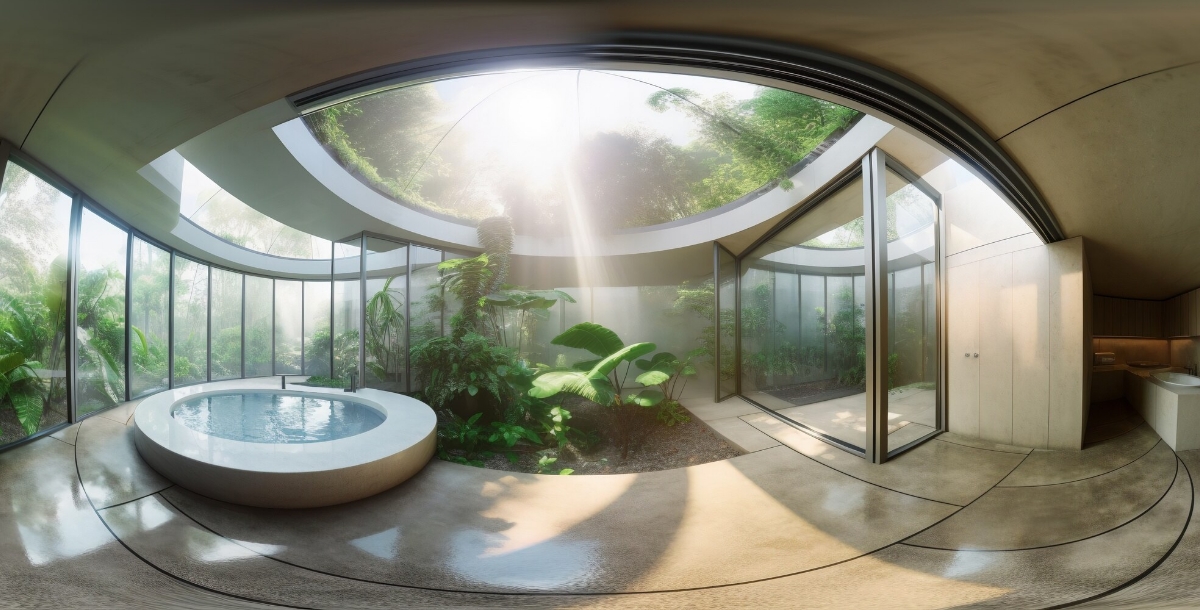 Natural light can enhance the beauty of architectural structures. Time your shoots during the golden hours of sunrise and sunset for soft, flattering light.
Natural light can enhance the beauty of architectural structures. Time your shoots during the golden hours of sunrise and sunset for soft, flattering light.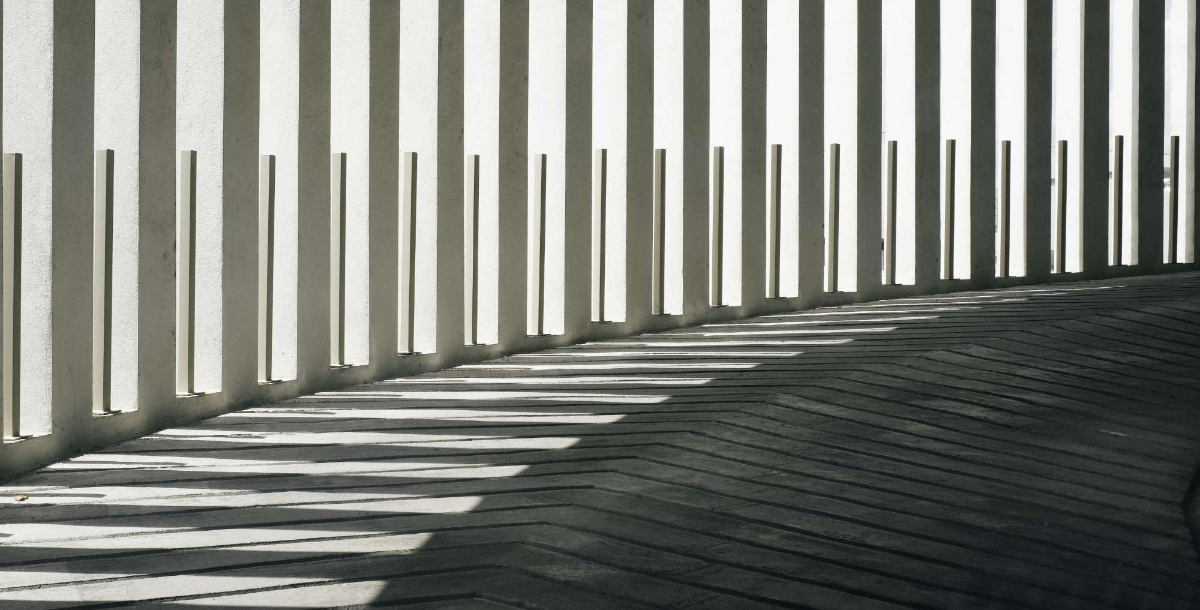 Learn to manage contrasting light and shadow to create dynamic and visually appealing images. Bracketing and HDR techniques can be valuable tools in tricky lighting situations.
Learn to manage contrasting light and shadow to create dynamic and visually appealing images. Bracketing and HDR techniques can be valuable tools in tricky lighting situations.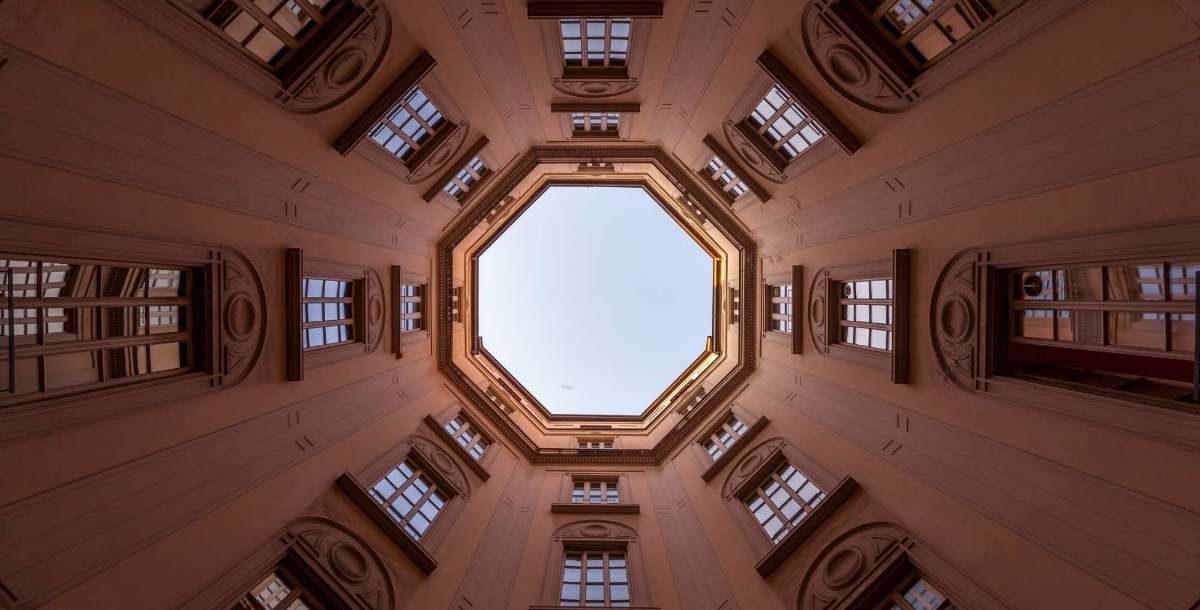 Symmetry can add a sense of harmony and balance to your architectural shots. Look for symmetrical elements within the building and frame them meticulously.
Symmetry can add a sense of harmony and balance to your architectural shots. Look for symmetrical elements within the building and frame them meticulously.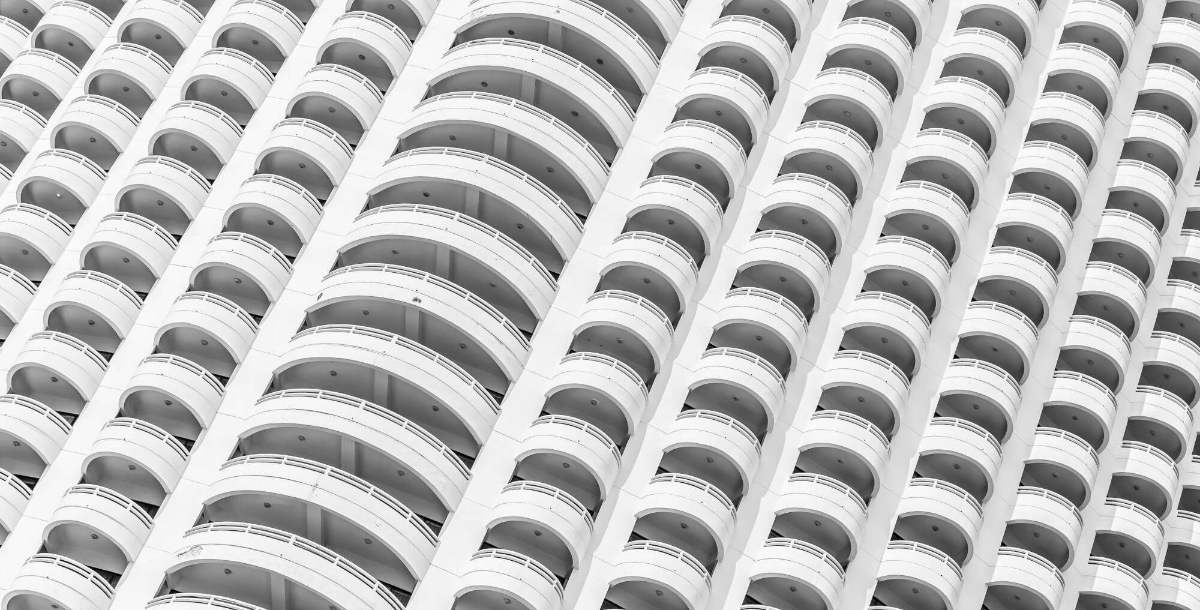 Architectural details often feature intriguing patterns and textures. Get up close and personal to capture these intricate details that add depth to your photographs.
Architectural details often feature intriguing patterns and textures. Get up close and personal to capture these intricate details that add depth to your photographs.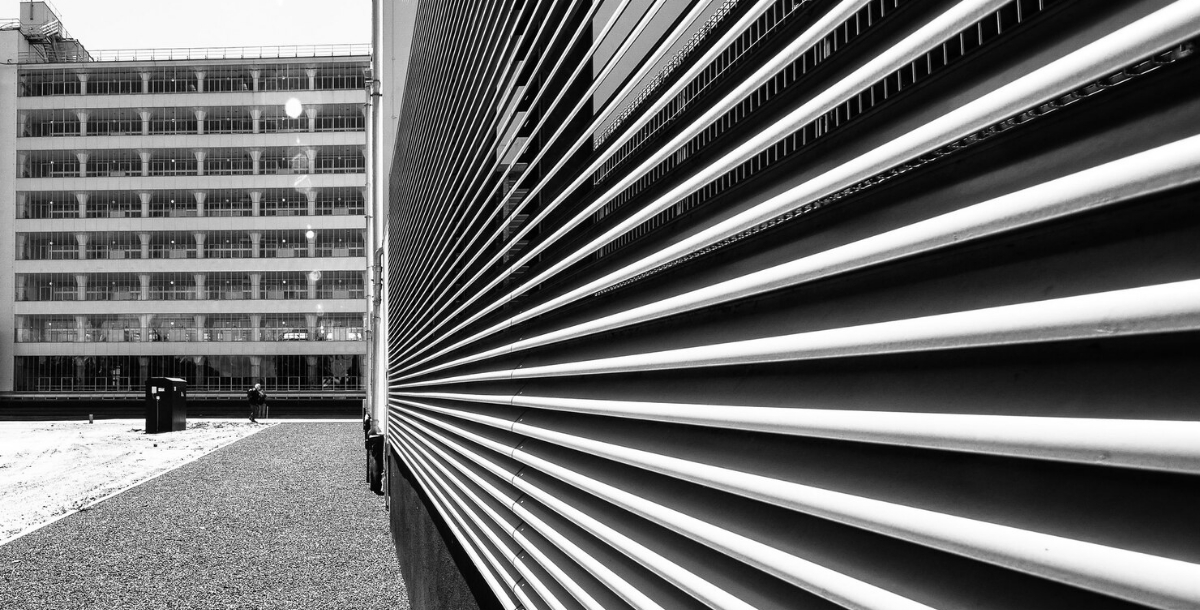 Use leading lines and geometric shapes to guide the viewer's eye through the image. Straight lines can create a sense of stability, while curves add fluidity and movement.
Use leading lines and geometric shapes to guide the viewer's eye through the image. Straight lines can create a sense of stability, while curves add fluidity and movement.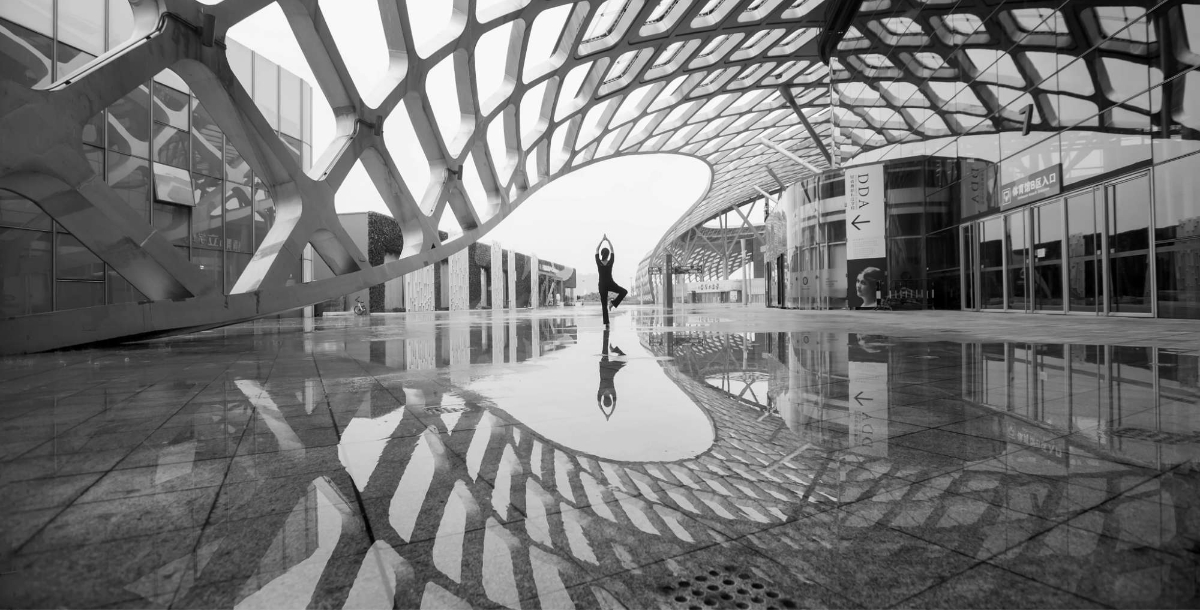 Incorporate elements that provide a sense of scale, whether it's a person standing next to a towering skyscraper or a tree framing a quaint cottage.
Incorporate elements that provide a sense of scale, whether it's a person standing next to a towering skyscraper or a tree framing a quaint cottage.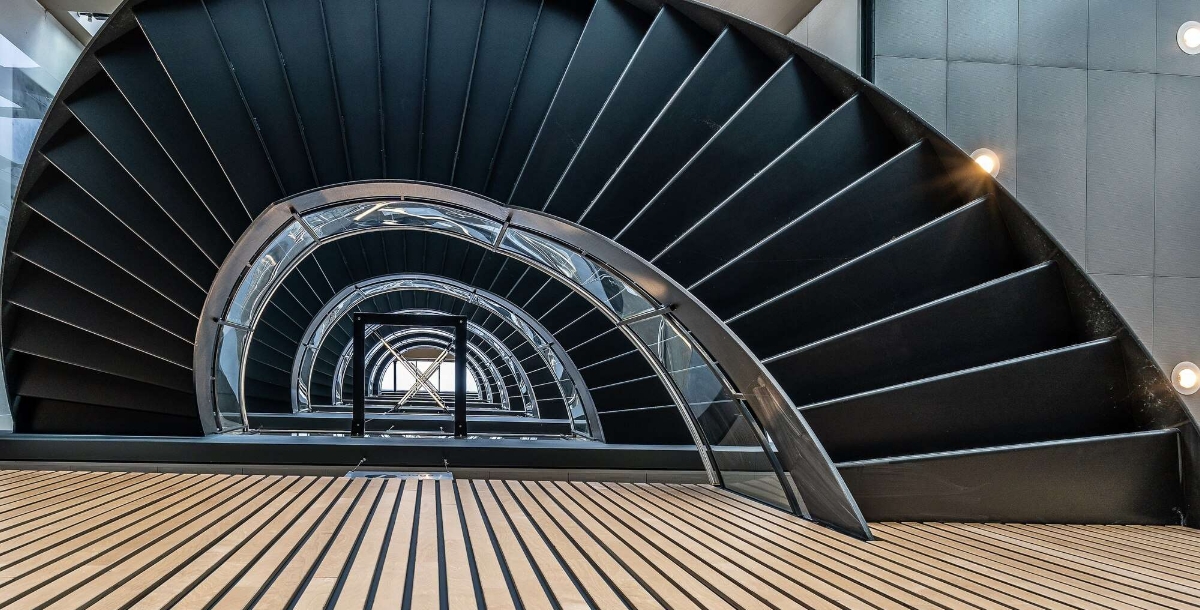 Every building has distinctive architectural features worth showcasing. Whether it's ornate facades or minimalist design elements, zoom in on these details to tell a compelling visual story.
Every building has distinctive architectural features worth showcasing. Whether it's ornate facades or minimalist design elements, zoom in on these details to tell a compelling visual story.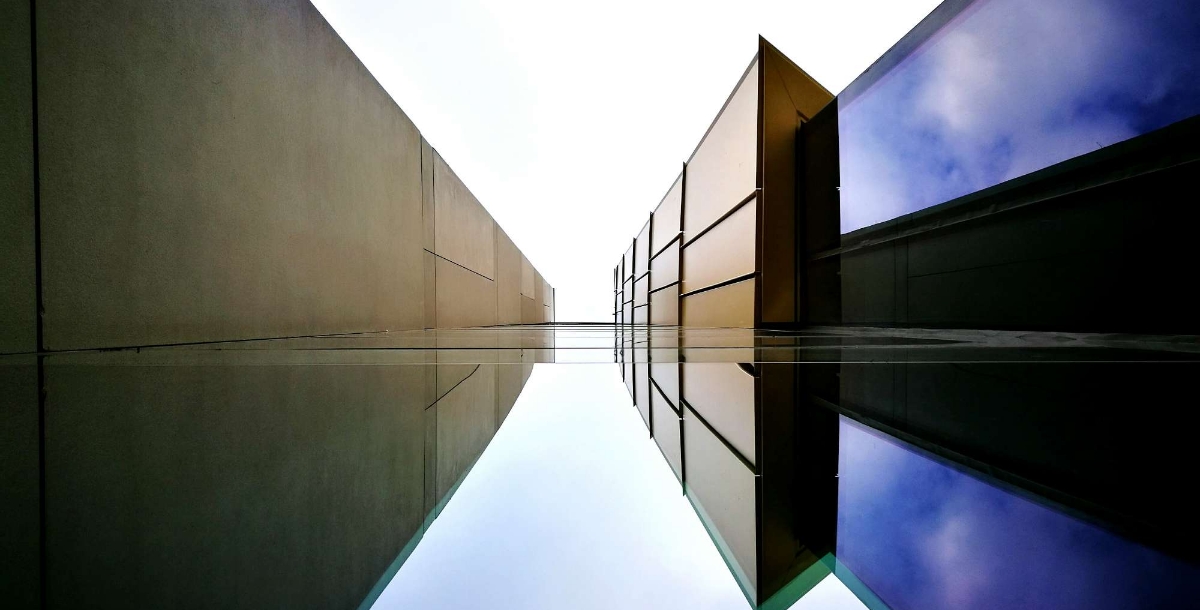 Explore the reflective surfaces of buildings, such as glass facades or water bodies, to capture intriguing reflections that add depth and dimension to your images.
Explore the reflective surfaces of buildings, such as glass facades or water bodies, to capture intriguing reflections that add depth and dimension to your images.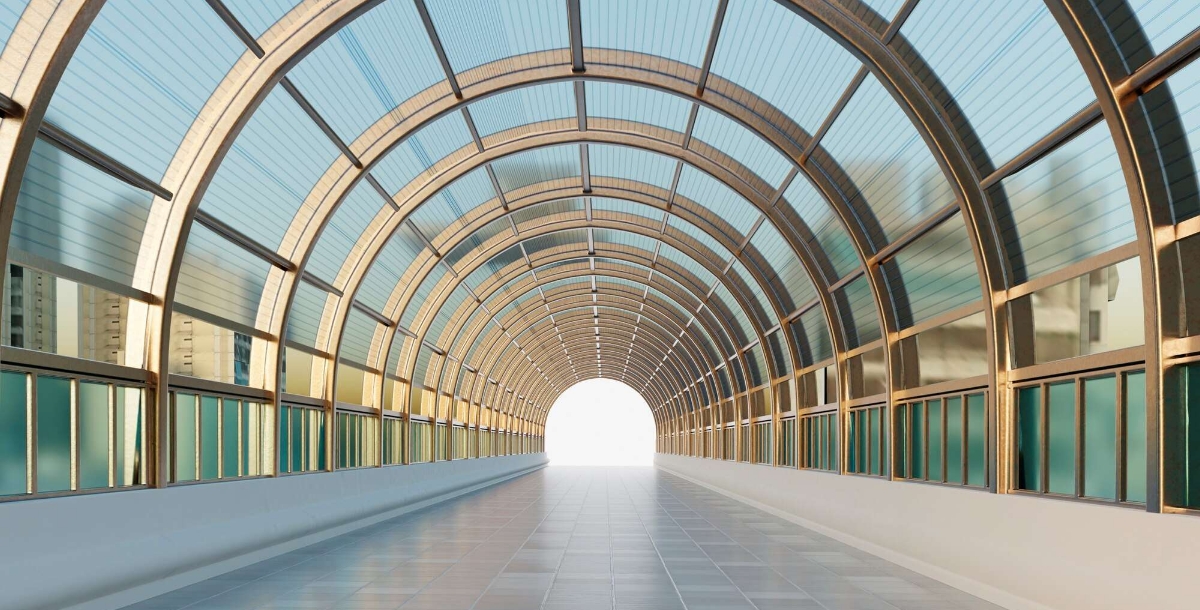 Understand how aperture settings affect depth of field and experiment with different focal points to create a sense of depth in your photographs.
Understand how aperture settings affect depth of field and experiment with different focal points to create a sense of depth in your photographs.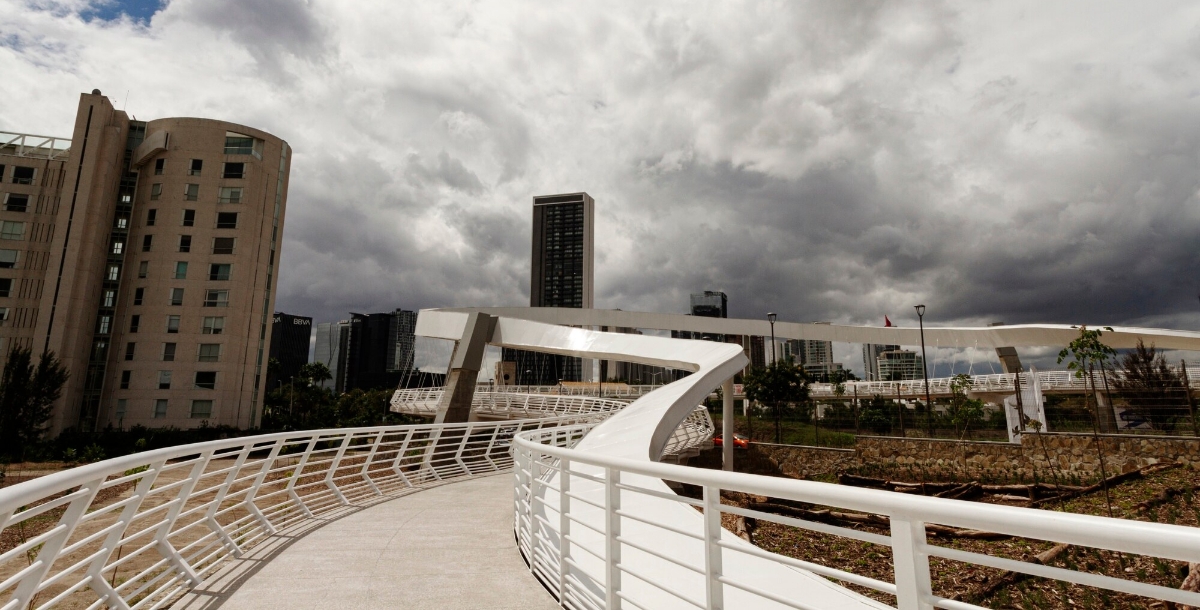 Don't shy away from shooting in diverse weather conditions. Rain, fog, or snow can add mood and atmosphere to your architectural photographs.
Don't shy away from shooting in diverse weather conditions. Rain, fog, or snow can add mood and atmosphere to your architectural photographs.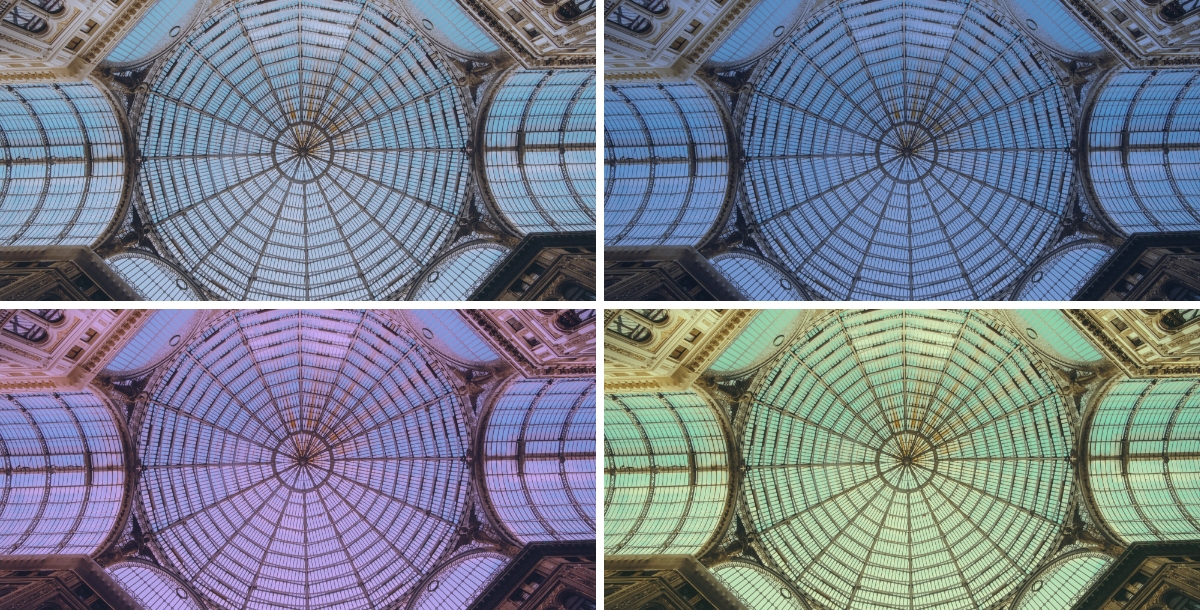 Experiment with polarizing filters to reduce glare and enhance colors, or Neutral density filters to control exposure in bright sunlight.
Experiment with polarizing filters to reduce glare and enhance colors, or Neutral density filters to control exposure in bright sunlight.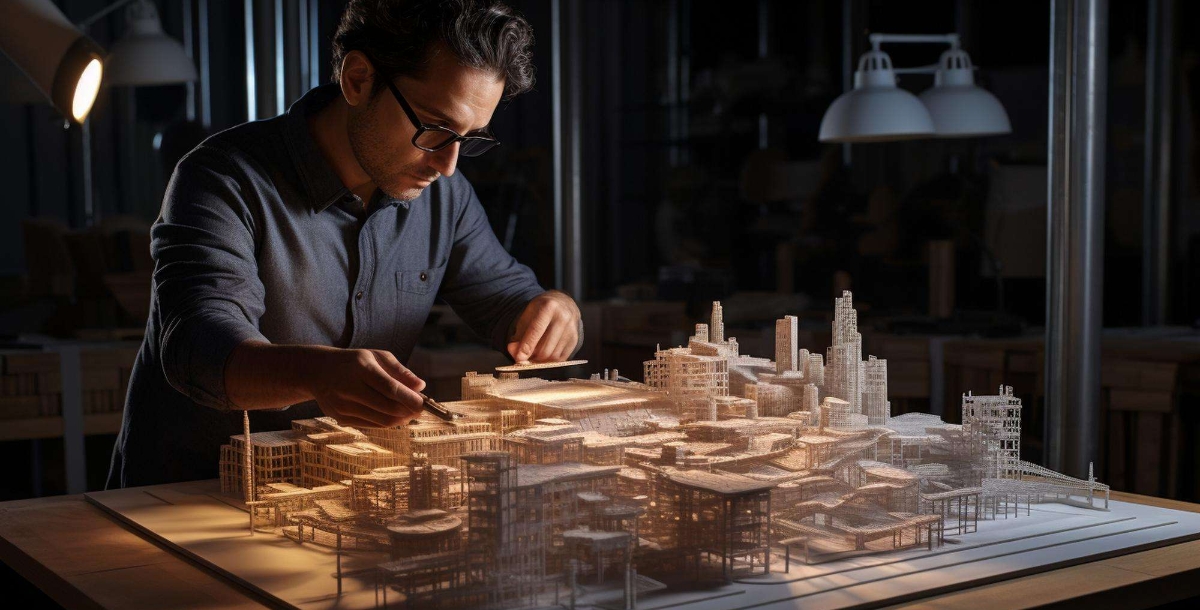 Use your architectural photography to convey a narrative or evoke emotions. Incorporate elements of human presence or interaction to add context and depth to your images.
Use your architectural photography to convey a narrative or evoke emotions. Incorporate elements of human presence or interaction to add context and depth to your images.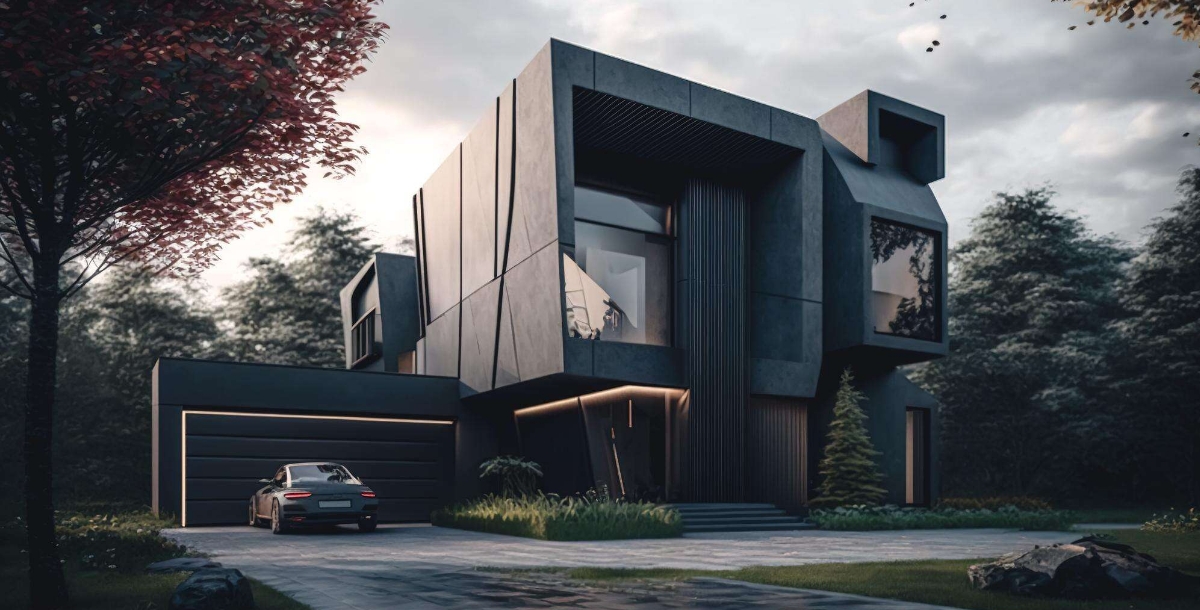 Urban environments offer a wealth of architectural photography opportunities. Capture the hustle and bustle of city life against the backdrop of towering skyscrapers and historic landmarks.
Urban environments offer a wealth of architectural photography opportunities. Capture the hustle and bustle of city life against the backdrop of towering skyscrapers and historic landmarks.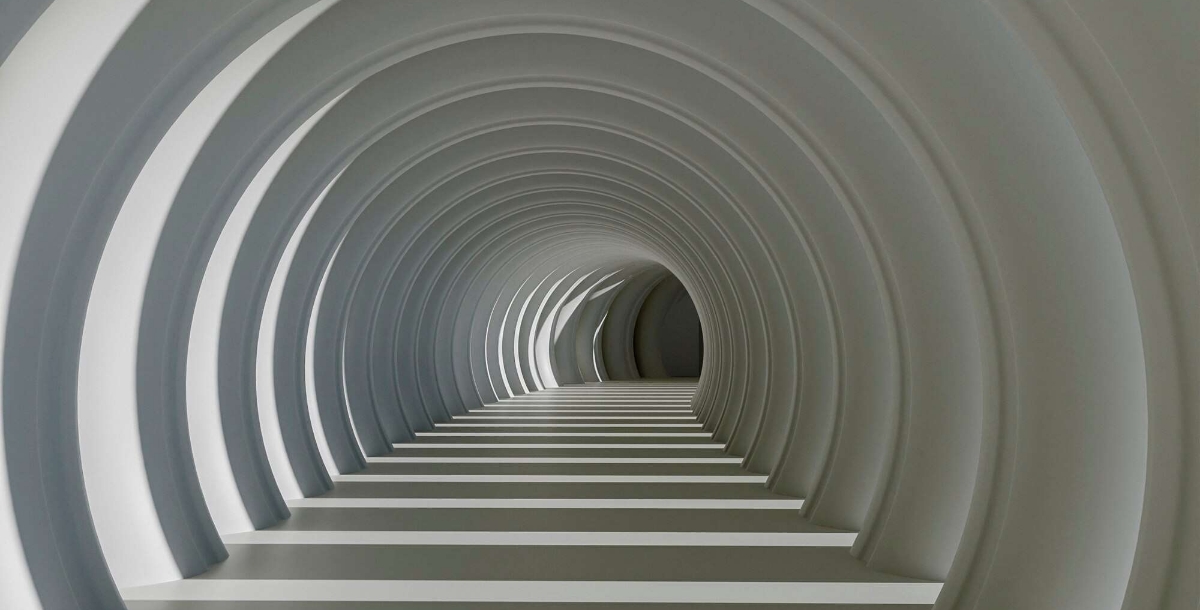 Experiment with long exposure photography to capture the passage of time, whether it's the movement of clouds overhead or the flow of traffic around a building.
Experiment with long exposure photography to capture the passage of time, whether it's the movement of clouds overhead or the flow of traffic around a building.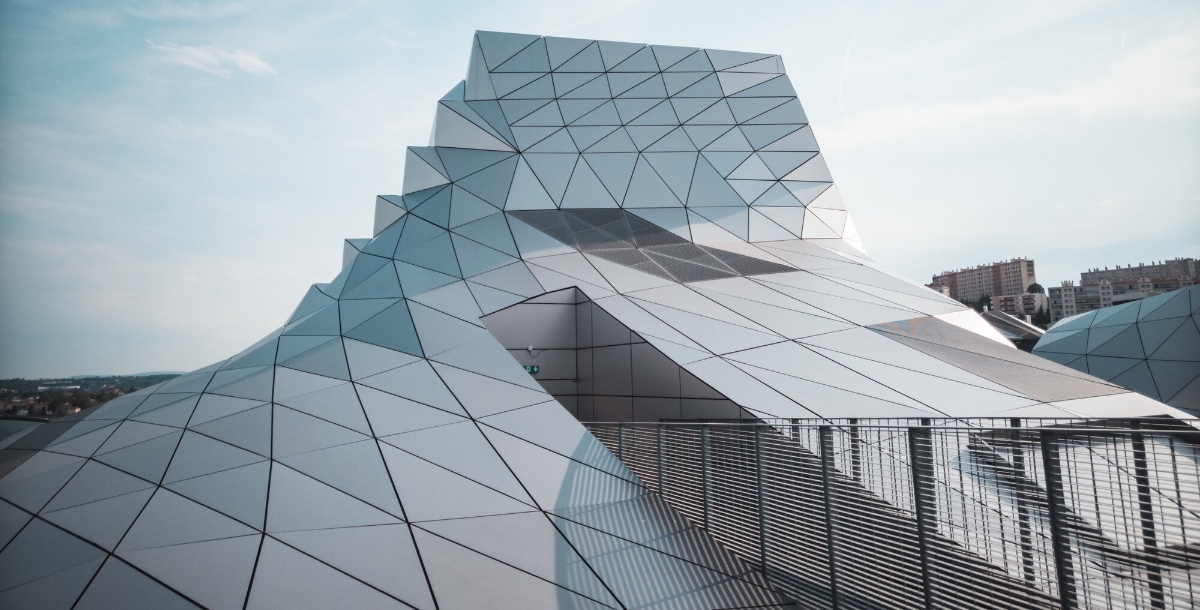 High Dynamic Range (HDR) imaging allows you to capture a wider range of tones and details in your architectural photographs, especially in high-contrast scenes.
High Dynamic Range (HDR) imaging allows you to capture a wider range of tones and details in your architectural photographs, especially in high-contrast scenes.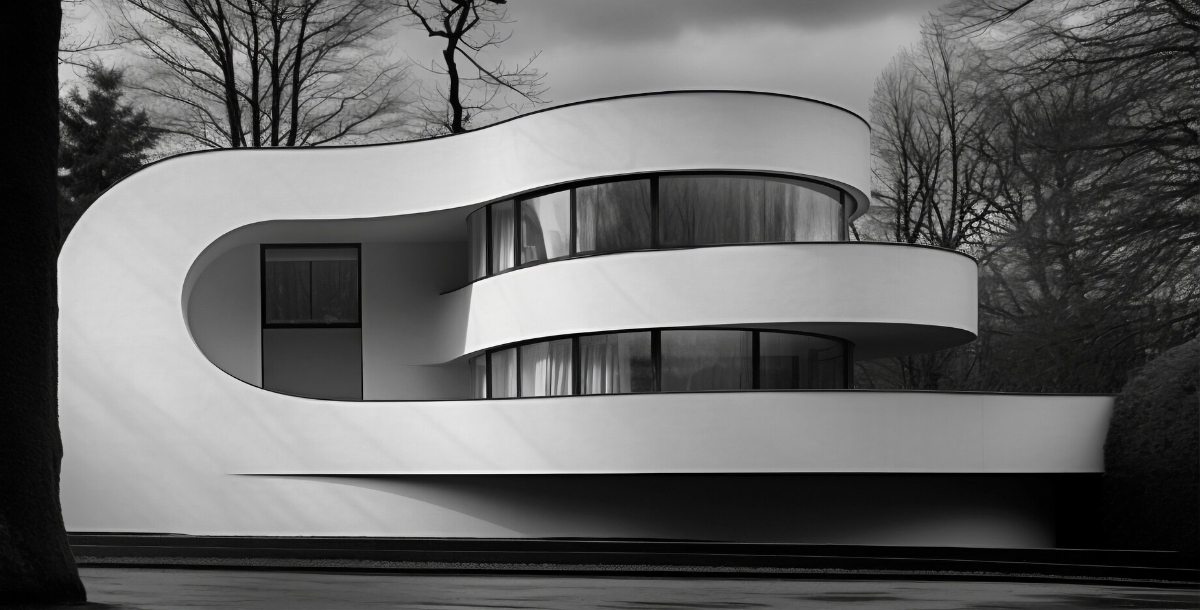 Black and white photography can accentuate the lines, shapes, and textures of architectural subjects, stripping away distractions and focusing on form.
Black and white photography can accentuate the lines, shapes, and textures of architectural subjects, stripping away distractions and focusing on form.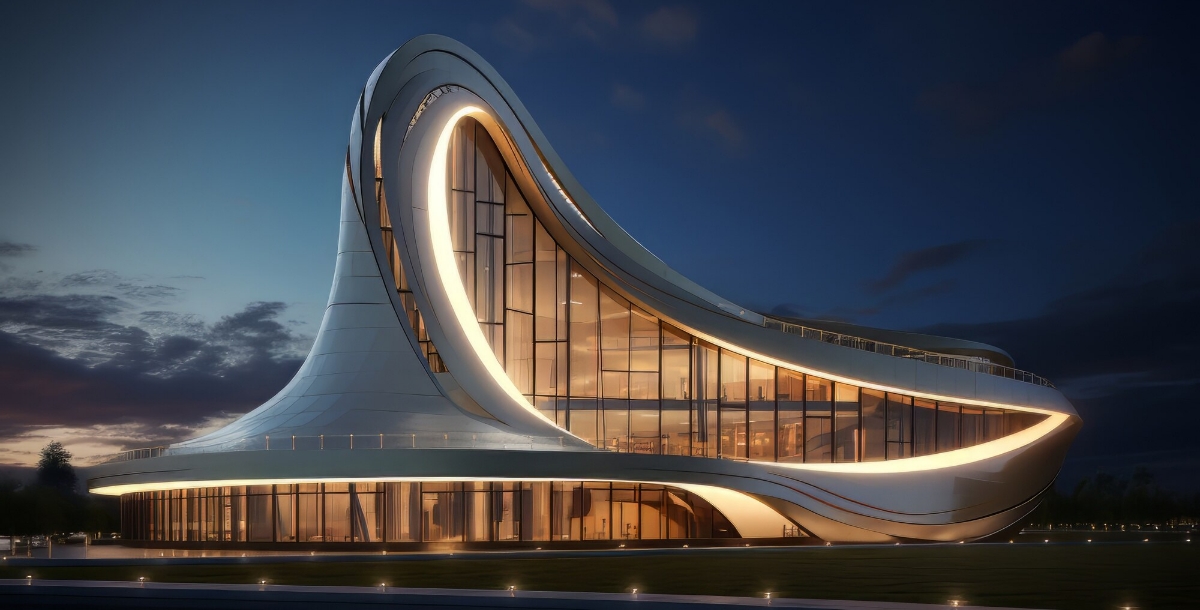 Nighttime can transform architectural landscapes into captivating scenes illuminated by artificial light. Experiment with long exposures and light painting techniques for stunning nighttime shots.
Nighttime can transform architectural landscapes into captivating scenes illuminated by artificial light. Experiment with long exposures and light painting techniques for stunning nighttime shots.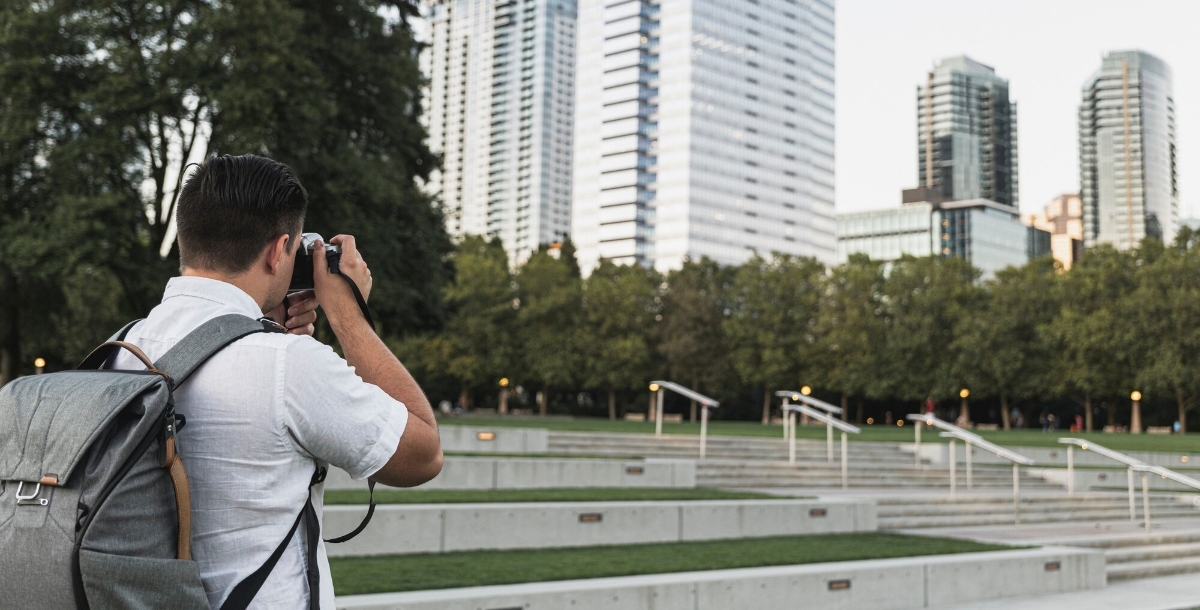 Architectural photography often requires patience and persistence to capture the perfect shot. Don't be afraid to revisit locations multiple times to capture different lighting conditions or compositions.
Architectural photography often requires patience and persistence to capture the perfect shot. Don't be afraid to revisit locations multiple times to capture different lighting conditions or compositions.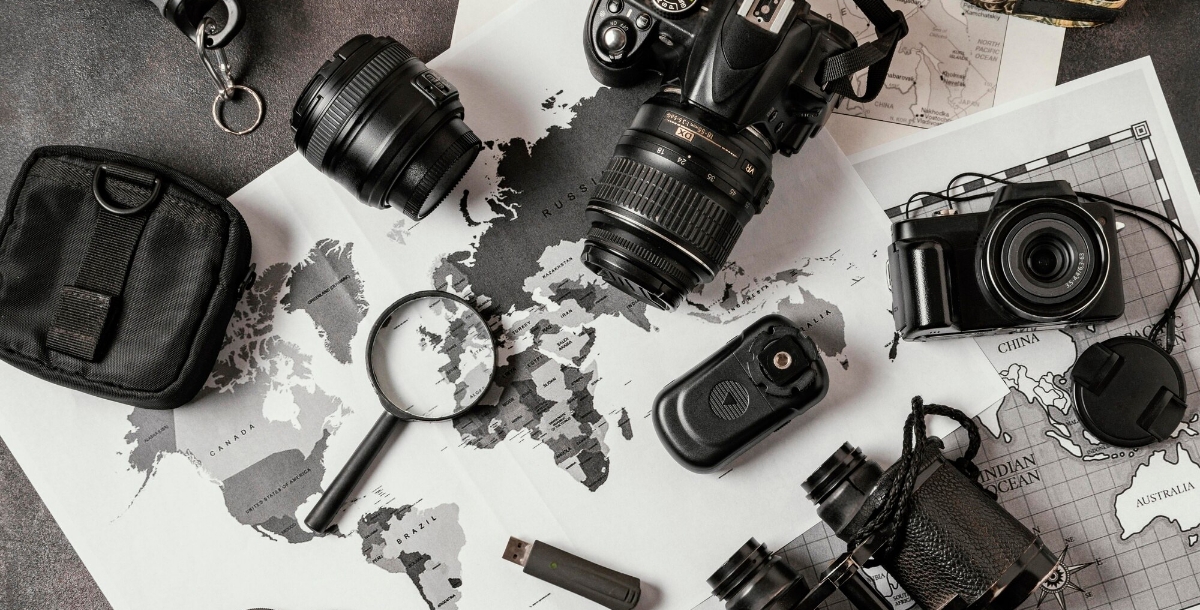 While a fancy camera isn't a prerequisite for great photography, investing in quality lenses and equipment can significantly elevate the quality of your architectural shots.
While a fancy camera isn't a prerequisite for great photography, investing in quality lenses and equipment can significantly elevate the quality of your architectural shots.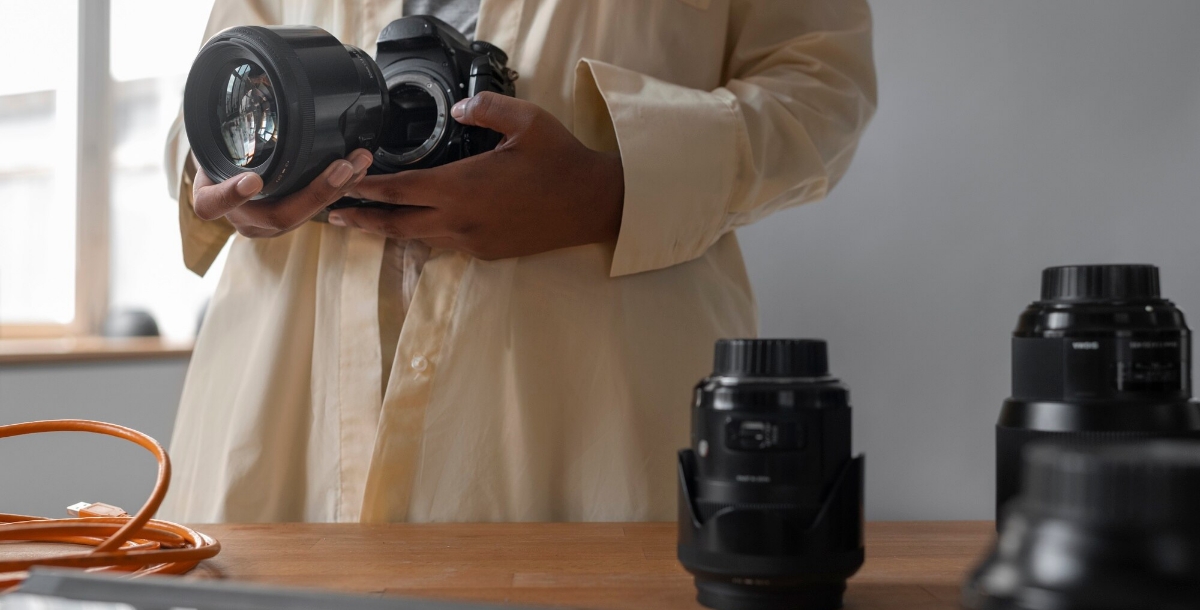 Dust and debris on your camera sensor or lens can ruin an otherwise perfect shot. Make sure to regularly clean and maintain your gear to ensure optimal performance.
Dust and debris on your camera sensor or lens can ruin an otherwise perfect shot. Make sure to regularly clean and maintain your gear to ensure optimal performance.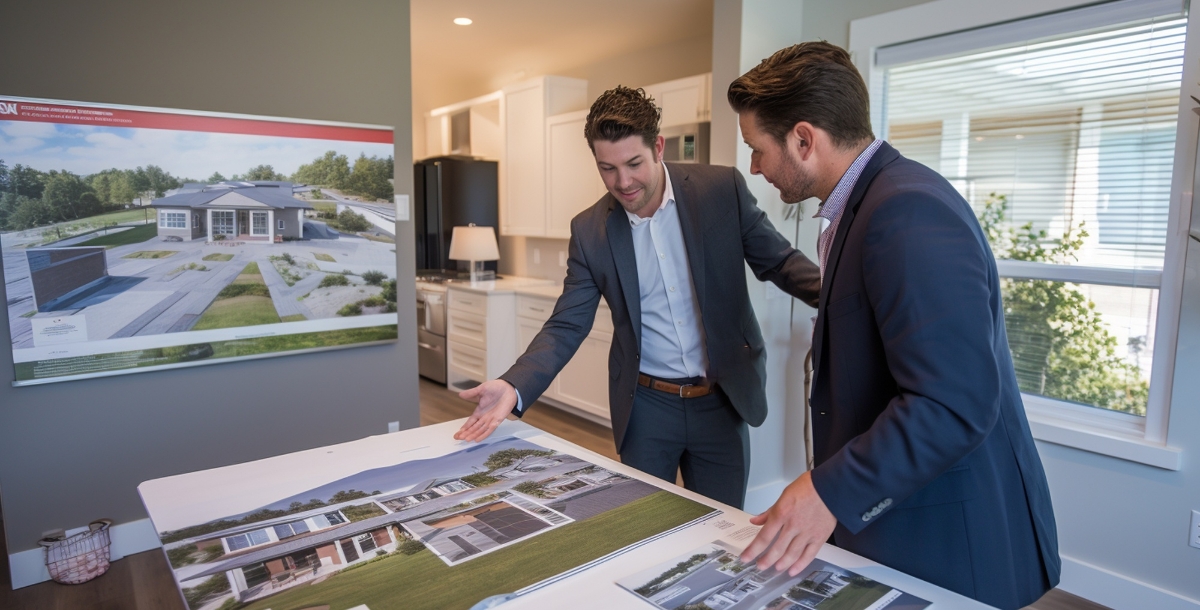 Draw inspiration from the work of renowned architectural photographers. Analyze their compositions, lighting techniques, and use of space to inform your own practice.
Draw inspiration from the work of renowned architectural photographers. Analyze their compositions, lighting techniques, and use of space to inform your own practice. Don't be afraid to seek feedback from peers or mentors to improve your skills. Constructive criticism can help you identify areas for growth and refinement in your work.
Don't be afraid to seek feedback from peers or mentors to improve your skills. Constructive criticism can help you identify areas for growth and refinement in your work.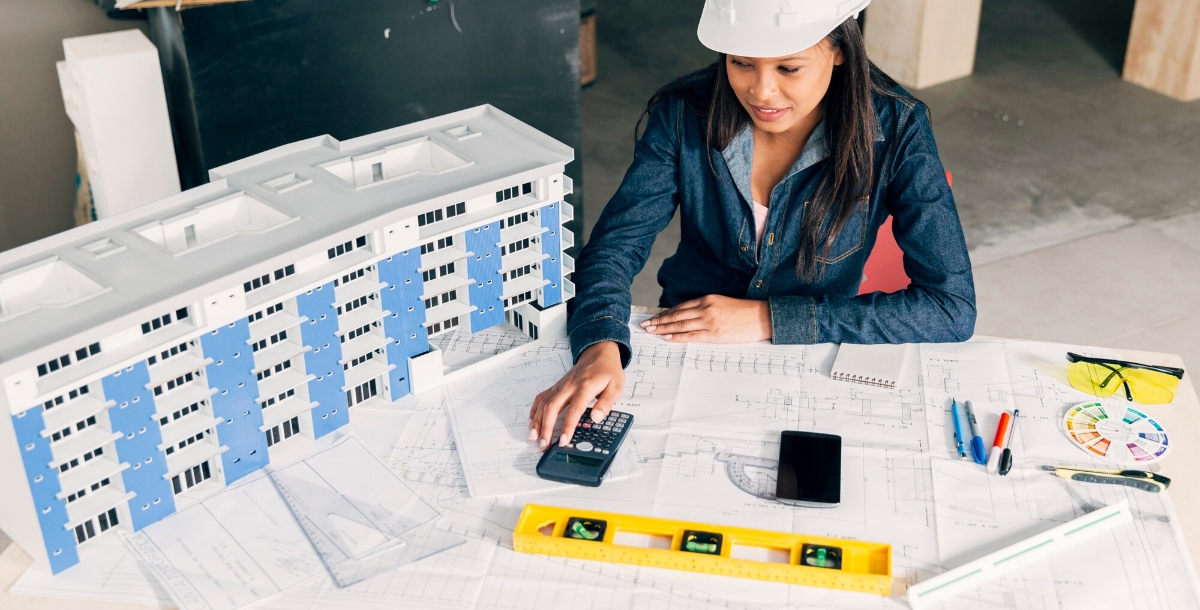 If you have access to construction sites, document the progress of buildings from inception to completion. These time-lapse sequences can be fascinating and informative.
If you have access to construction sites, document the progress of buildings from inception to completion. These time-lapse sequences can be fascinating and informative.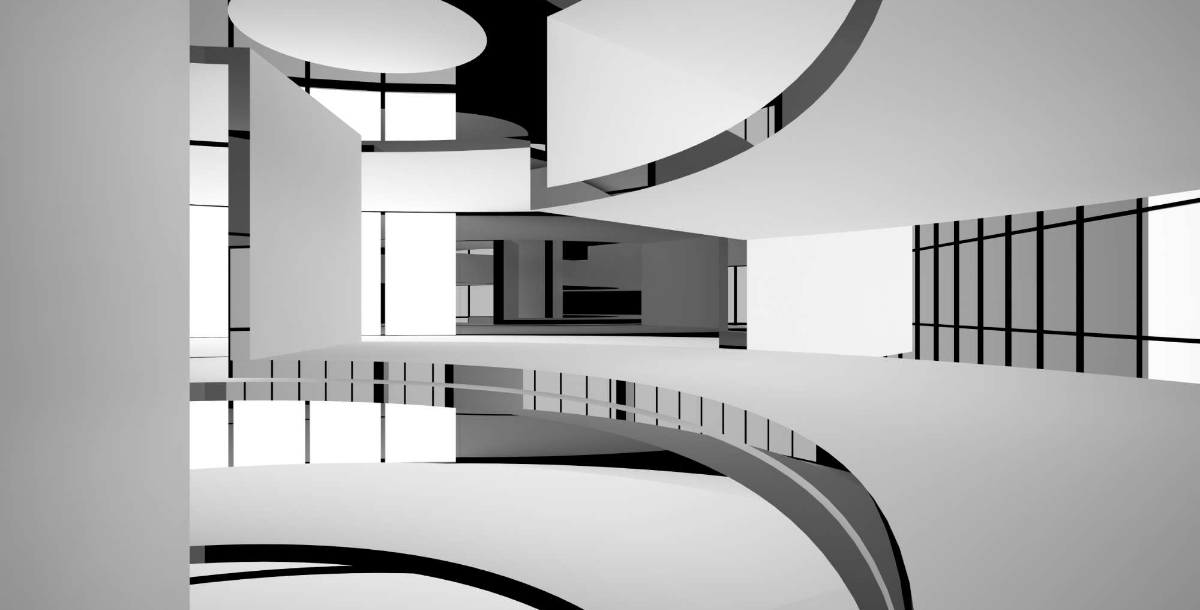 Avoid cluttered compositions that distract from the architectural subject. Aim for simplicity and clarity in your framing to ensure the focus remains on the building itself.
Avoid cluttered compositions that distract from the architectural subject. Aim for simplicity and clarity in your framing to ensure the focus remains on the building itself.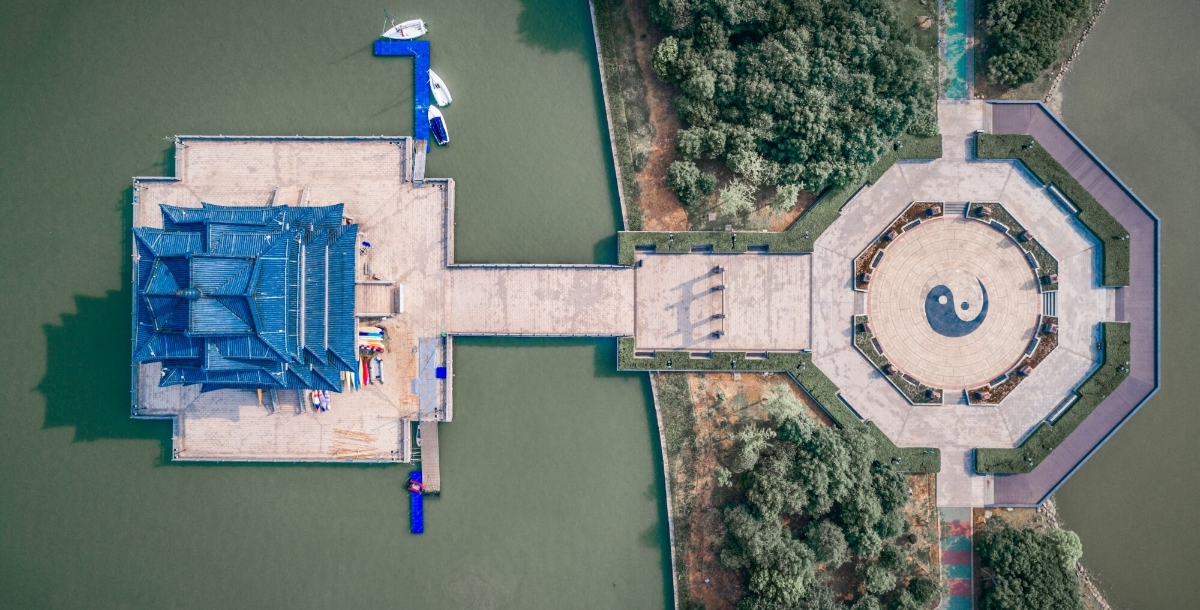 Drones offer unique perspectives and angles that are otherwise impossible to achieve. Familiarize yourself with drone regulations and safety guidelines before taking to the skies.
Drones offer unique perspectives and angles that are otherwise impossible to achieve. Familiarize yourself with drone regulations and safety guidelines before taking to the skies.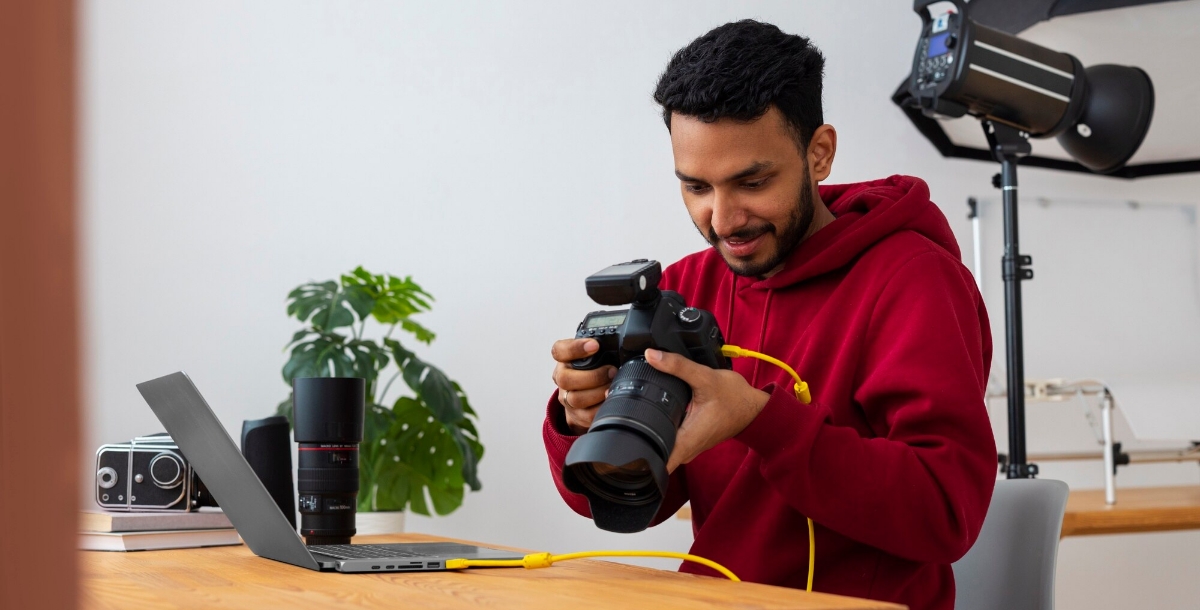 Expand your photography vocabulary and technical know-how by familiarizing yourself with photography terms and techniques. A comprehensive photography glossary can be a valuable resource.
Expand your photography vocabulary and technical know-how by familiarizing yourself with photography terms and techniques. A comprehensive photography glossary can be a valuable resource.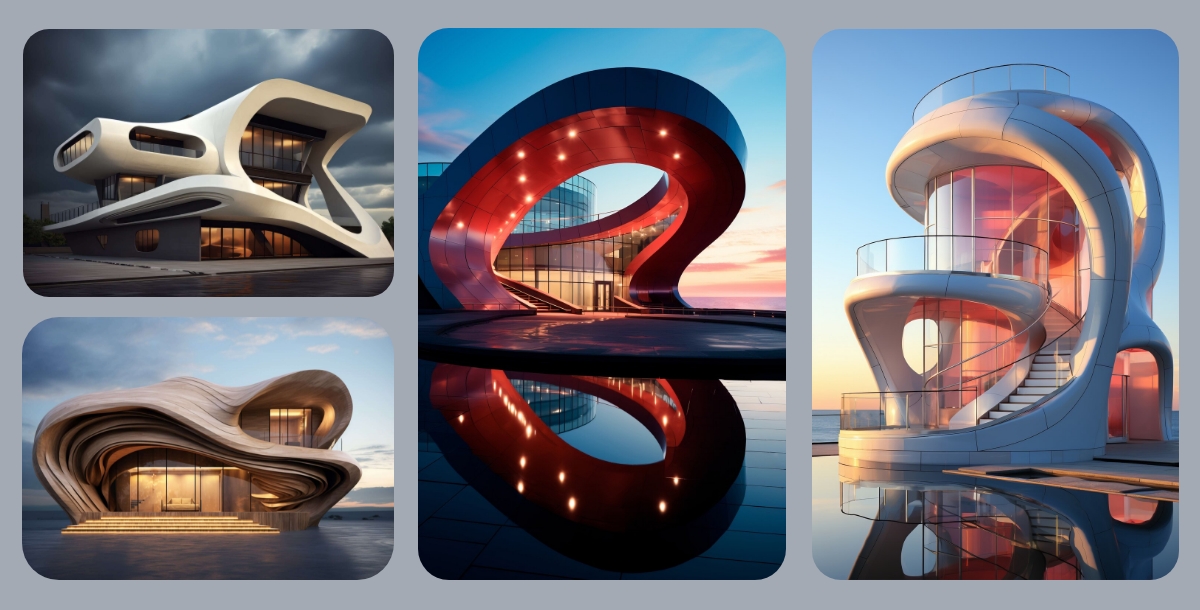 Take advantage of AI-powered photo enhancers and editors to streamline your workflow and achieve professional-looking results with minimal effort.
Take advantage of AI-powered photo enhancers and editors to streamline your workflow and achieve professional-looking results with minimal effort.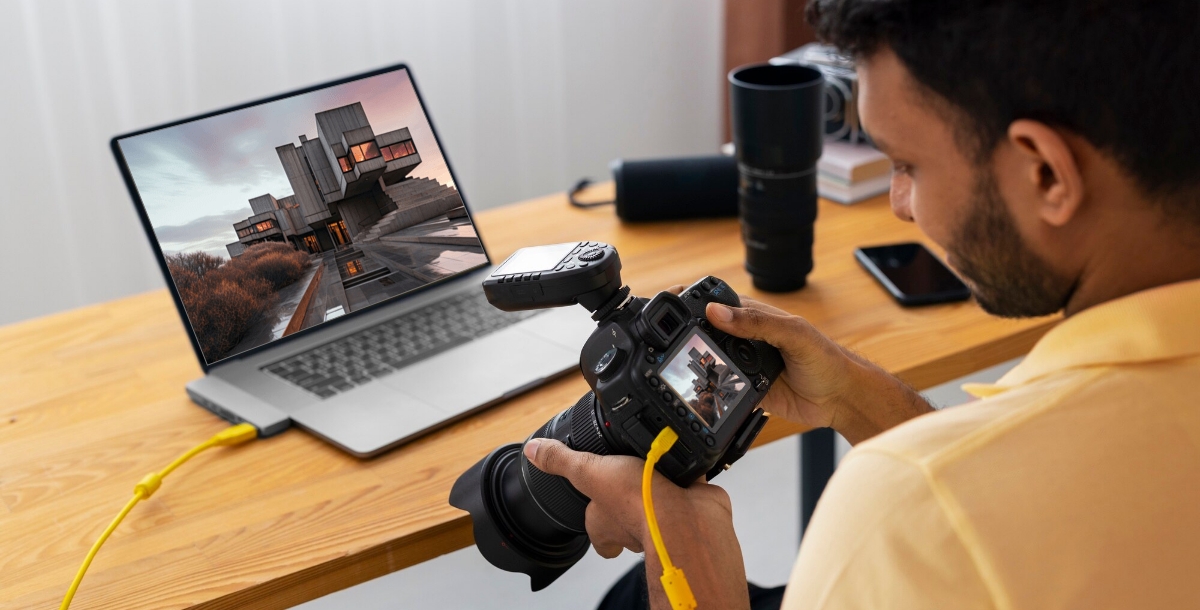 Don't let your architectural photography languish on your hard drive. Share your work on social media platforms, photography forums, or even in exhibitions to gain exposure and feedback.
Don't let your architectural photography languish on your hard drive. Share your work on social media platforms, photography forums, or even in exhibitions to gain exposure and feedback.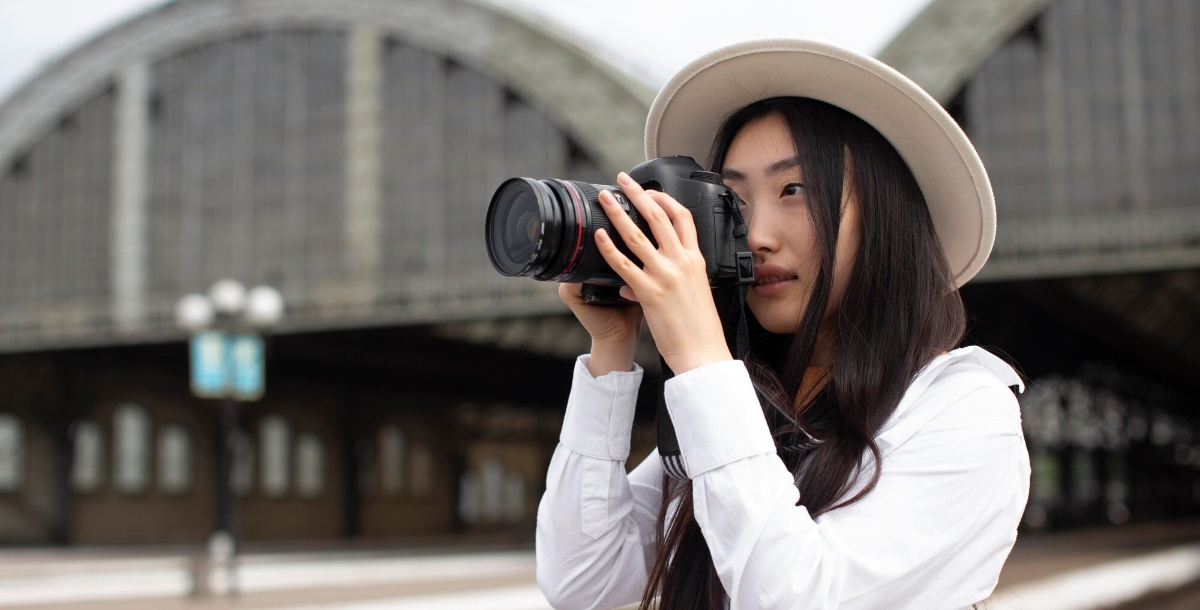 The world of photography is vast and ever-evolving. Stay curious, keep experimenting, and never stop learning new techniques and approaches to elevate your architectural photography game.
The world of photography is vast and ever-evolving. Stay curious, keep experimenting, and never stop learning new techniques and approaches to elevate your architectural photography game.